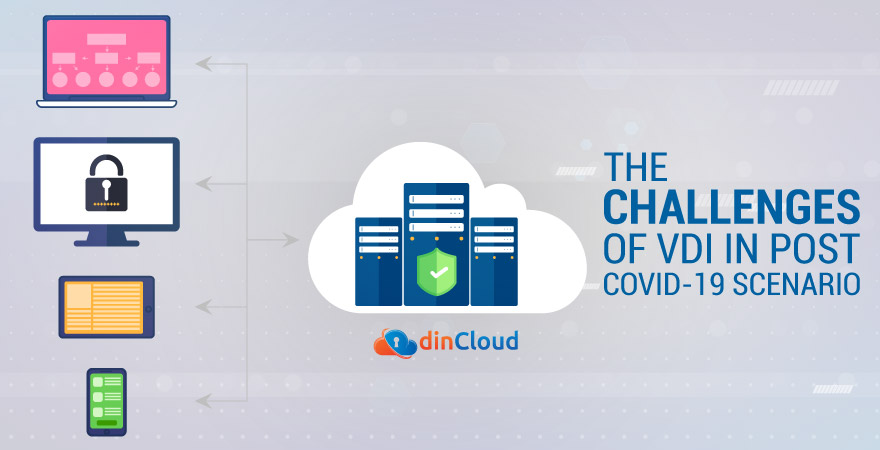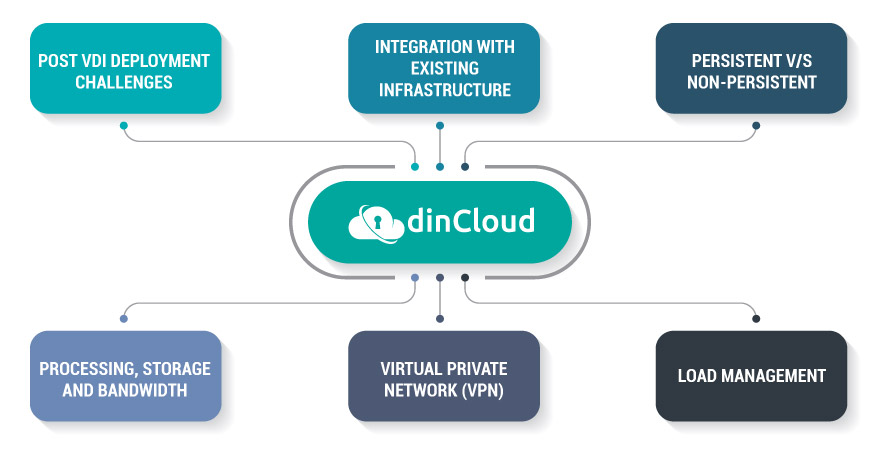The Covid-19 pandemic has posed unprecedented Business Continuity (BC) challenges for organizations across the globe. Most entities find themselves in either of these two scenarios, neither of which seem very heart warming.

The first category of organizations are those who had some sort of virtualization solution already in place, but in most cases, the scale of the solution is inadequate to support the needs of entire workforce working from the safety of their homes.
Also Read: Basic Requirements for a Successful VDI Deployment
Second category of organizations are those who were caught totally off guard with this pandemic and are now hurriedly scrambling for a solution that can sustain their core business operations remotely.
In this post, we will focus our discussion on Virtual Desktop Infrastructure (VDI) but before we delve into that, let’s first clear up the difference between the two most common deployment models for Virtual Desktops (VD).
Virtual Desktop Infrastructure (VDI)
In case of a VDI deployment model, all the hardware that supports the Virtual Desktops (VD) is provisioned and maintained on premise by the deploying entity itself. While this is a costly and cumbersome model, it gives the entity absolute control over its data and apps.
Also Read: Why Virtual Desktop Infrastructure (VDI)?
Desktop as a Service (DaaS)
This deployment model can be considered as the main contemporary of VDI. In this model, all the hardware over which the VDs run is procured and maintained by a third party Cloud Service Provider (CSP) against a certain usage fee.
The VDs are delivered to end users over the internet, who can access their VDs from anywhere so long as there is internet connectivity. Users can also access the VDs using multiple devices such as smartphone, tablet, laptop or desktop.
VDI versus DaaS
It is less a matter of what’s right and more a matter of what’s best for your organization’s unique needs. A DaaS solution will relieve you of all the additional costs and hassle of maintaining the hardware infrastructure on premise but you lose control over your data.
On the flip side, a VDI solution is quite expensive to setup in the first place and then also carries heavy maintenance costs over time. The plus point is that the deploying entity enjoys full control over data and has a lot of flexibility in application deployment as well.
Also Read: Virtual Desktop Infrastructure (VDI) Providers
Covid-19 and VDI Challenges
As highlighted earlier in this post, the VDI deployment model puts a lot of burden on the deploying entity in terms of both finances and IT expertise. The foremost challenge amid Covid-19 pandemic is the severe disruption of supply chains all across the globe.
So, the foremost challenge will be procuring the requisite IT hardware for the VDI solution. Even if this obstacle is overcome, the next hurdle would be breaking the imposed lockdowns across the globe and visiting the premises for setting up the hardware.
We haven’t even reached the testing and integration phases yet and a VDI solution already appears to be highly improbable. Although some integration related tasks can be performed remotely, setting up the hardware properly still requires human intervention.
Also Read: Why is dinCloud the best VDI solution?

Post VDI Deployment Challenges
Assuming we get past the initial challenging phase of setting up all the hardware resources for the VDI solution, we then move on to the more operational and technical bottlenecks of the deployment phase.
Integration with Existing Infrastructure
Before scaling up or deploying the VDI solution, there is a lot of organizational data and applications that are residing on the physical systems of the deploying entity. All the data and apps need to be seamlessly integrated with the VDI solution.
A key point to consider at this stage is that the deploying entity should ideally employ the VDI solution of the vendor whose equipment and hardware is already extensively used across the organization. This will make the integration process easier and quicker.
Persistent v/s Non-Persistent
The next question to address is whether to go for persistent or non-persistent Virtual Desktops (VDs). Persistent VDs save the individual preferences of each user for the next login and thus enhance user experience. They however require more resources.
Non-persistent VDs on the other hand do not retain individual user’s preferences. This model allocates a random VD to each user upon login from a pool of available VDs. This in turn compromises end user experience but is not that resource intensive.
Processing, Storage and Bandwidth
The VDI model relies on centralized processing and storage. This implies that the latency for the end user is directly proportional to the processing intensity of the workloads being executed at any given time and the number of active users.
You will need to stress test the VDI solution for peak usage scenario as nearly entire workforce will be logged in during peak business hours. The same holds true for storage. You will need to cater the storage capacity for existing and near future needs.
VDI solution will greatly enhance user traffic over your organizational network. It is imperative that you enhance your existing on premise internet bandwidth as this will have a major impact on user experience and latency.
Virtual Private Network (VPN)
As the entire workforce will be logging into the VDI solution remotely, a VPN is inevitably required. You will need to provision a quality VPN Solution that is both reliable and secure as the security of organizational data heavily depends on it.
Load Management
You will also need to schedule the working hours of remote employees so as to keep the burden on the VDI solution at manageable levels. To ensure a seamless user experience, all employees should preferably avoid login simultaneously.
Conclusion
Under normal circumstances, a VDI solution should not be this challenging but these are extraordinary times. Still, if the deployment process for VDI is thorough, the deploying entity is highly likely to obtain the desired results, albeit with a lot more effort.
A great alternative to VDI is DaaS, which removes most of the bottlenecks we have discussed above. dinCloud, a premier Cloud Service Provider (CSP), offers a highly robust, secure and reliable DaaS solution (dinHVD) that is hosted in the cloud.
Contact Us to share your remote work needs in the wake of Covid-19 and beyond, so that we can tailor a cloud solution exactly for your Business Continuity (BC) needs. We offer our VDs thru a transparent, flat rate pricing model so that you can focus only on your business.


